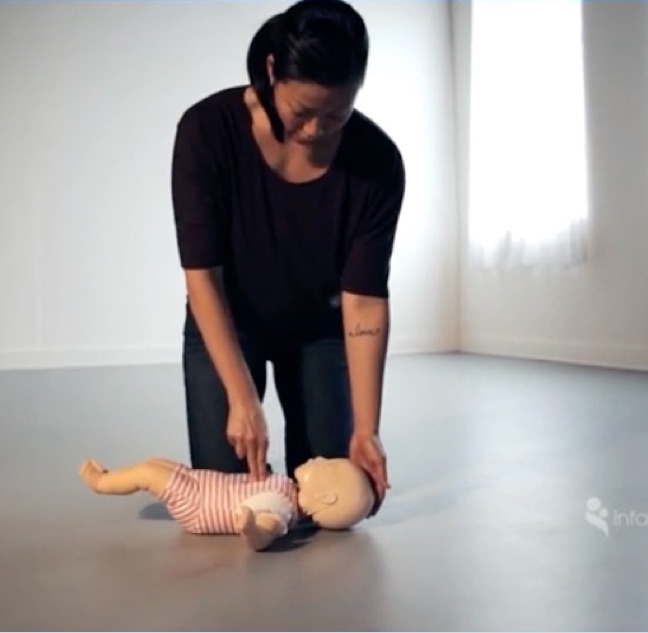Performing CPR is always a high-stakes exercise. But when you’re performing CPR on your infant child, or an infant you’re caring for, the stakes somehow feel even higher. A life-or-death situation with a small, fragile infant is a position that no one wants to be in, but it’s important to be prepared, should such a situation ever arise.
So how can you be prepared? Learning the basics of CPR for infants is a good place to start. Yes, CPR for infants is slightly different than CPR for children or for adults, and the distinctions are important to know.
One of the most common questions asked about CPR for infants is about the CPR “ratio.”
What is a CPR ratio?
The term CPR ratio refers to the ratio of chest compressions to rescue breaths when performing CPR. In other words, how many compressions should you give for every breath in order to optimize the oxygenated blood that’s being manually pushed through the cardiovascular system and ultimately into the brain. In the CPR world, there are very specific guidelines to this, especially with infants.
What is the CPR ratio for an infant child?
The CPR ratio for an infant child is actually the same as the ratio for adults and children, which is 30:2. That is, when performing CPR on an infant, you perform 30 chest compressions followed by 2 rescue breaths. According the the American Heart Association and ILCOR, it is certainly permissible to perform “hands only” CPR on adults and older children. But for infants, it’s absolutely recommended to weave in the two breaths every 30 compressions.
How do I perform chest compressions on an infant?
Chest compressions on an infant are performed differently than chest compressions on an adult or child. Because an infant is more fragile, the compressions should be performed with only two fingers, at the center of the chest, just below the nipples. Compressions should be about an inch and a half deep and at a rate that coincides with the beat of the song “Staying Alive” by the Bee Gees.
How do I perform rescue breaths on an infant?
Performing rescue breaths on an infant is quite different than performing them on adults, or even on older children.
For adults and children aged one or older, you should pinch the nose shut with your fingers while covering the victim’s mouth with your own to perform rescue breaths. This is not possible to do effectively with an infant. Because of this, when performing rescue breaths on an infant, you should cover the infant’s mouth and nose with your mouth, creating a tight seal.
There are a couple other important differences concerning rescue breaths for infants.
One is the angle of the head. Any victim’s head should be tilted slightly backwards before performing rescue breaths, so as to open the airway. However, it’s important to not tilt the head back too far, and it’s very easy to overdo it with an infant. Because of this, many people recommend tilting the baby’s head back very slightly in a “sniffing position,” just back far enough so that it looks like the infant is sniffing the air. This gets the baby’s head at the right angle.
Another big difference is the power of the breath. A full adult breath would be too much for an infant, so instead of using your lungs to administer the breath, it’s recommended to just fill your cheeks with air and use that breath as the rescue breath.
What should I do after I perform chest compressions and rescue breaths?
CPR should only be performed if the infant is unconscious or unresponsive. If the infant regains consciousness, stop performing CPR and call 911. Stay with the infant, monitoring them closely, until help arrives.
If the infant does not regain consciousness, perform 5 cycles of CPR (i.e. 30 compressions and 2 rescue breaths, repeated 5 times) and then call 911. After you have called for help, continue performing CPR until emergency services arrive.
(Note: for infants and children, immediate CPR is vital. If you are alone with the infant, perform at least 5 cycles of CPR before pausing to call 911. If you are not alone with the infant, one person should call 911 immediately while the other begins CPR.)
Remember this: the purpose of CPR is not to bring a child back to consciousness, but to manually perform the work of the cardiovascular system until advanced medical help arrives.
How can I remember the CPR ratio for an infant child?
The best way to learn and retain all proper CPR techniques is to take a CPR certification course, and review the course materials often to keep the information fresh in your mind.
Infant CPR offers online certification courses that are convenient and comprehensive, so you can receive quality CPR training from the comfort of your home. Once you’ve enrolled in one of our courses, you have unlimited access to the material, so you can refer to it any time you need to brush up on your skills.
Learning how to properly perform CPR on infants can increase your confidence as a parent or caregiver. Try one of our classes today!



